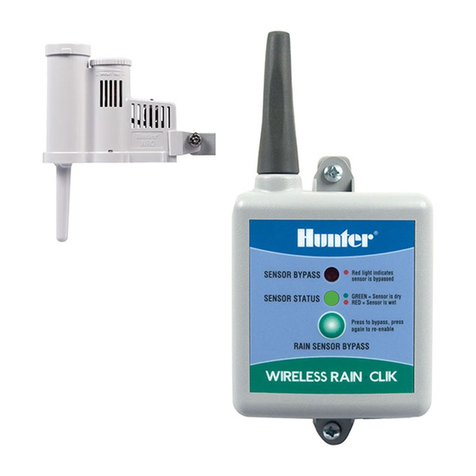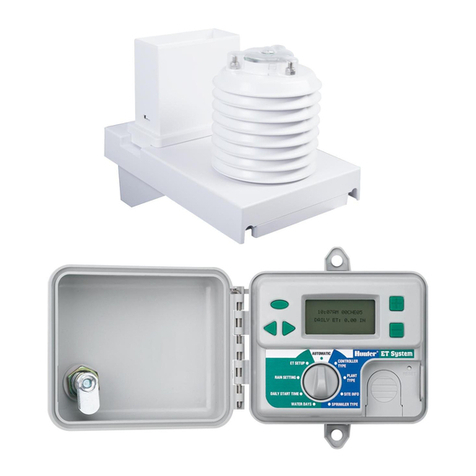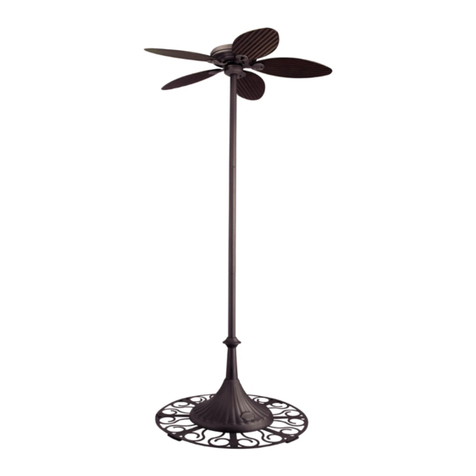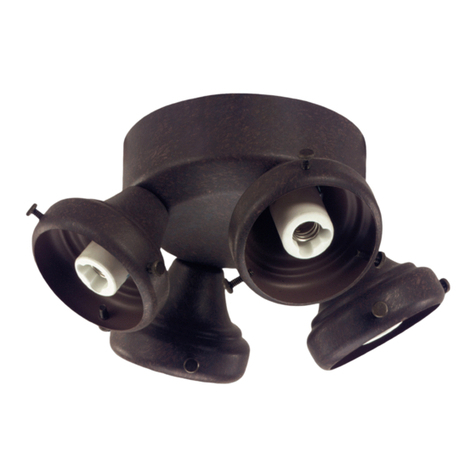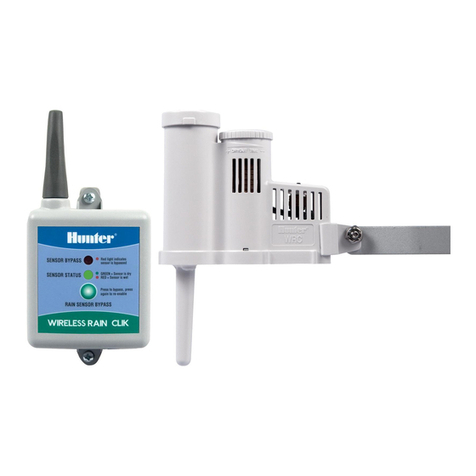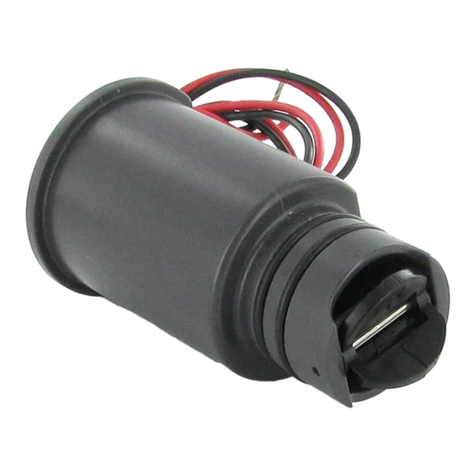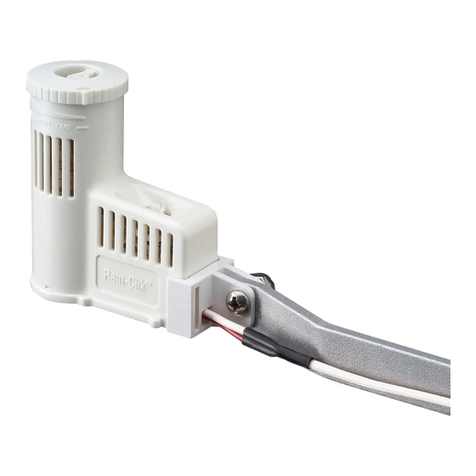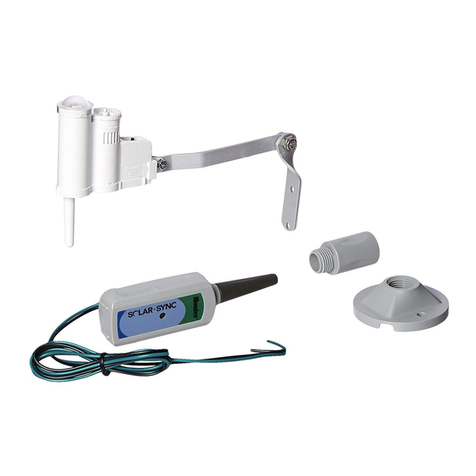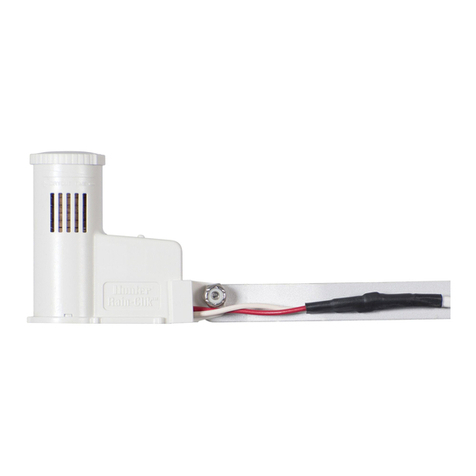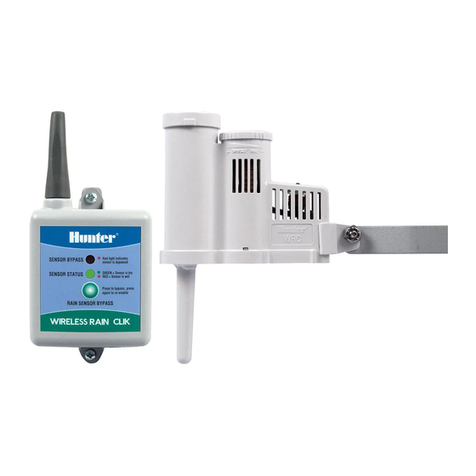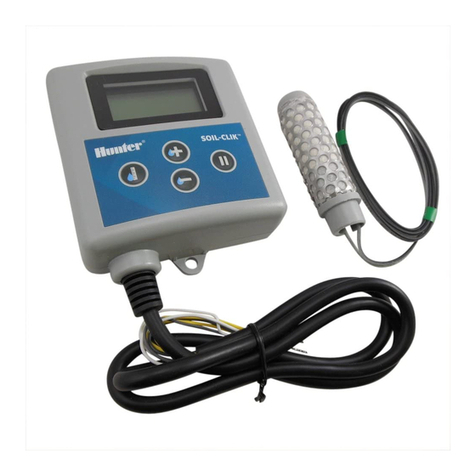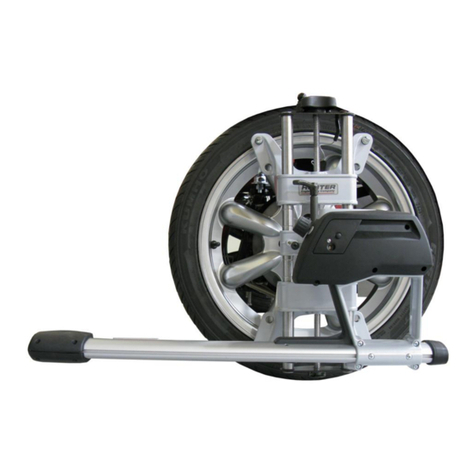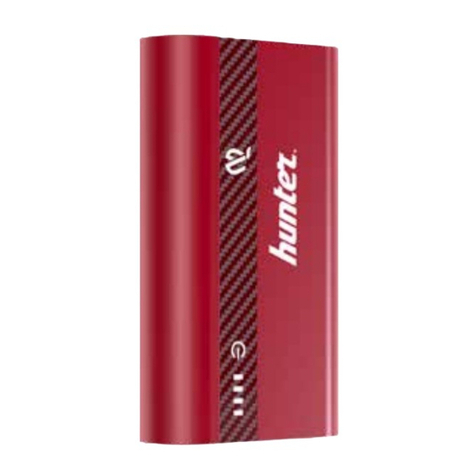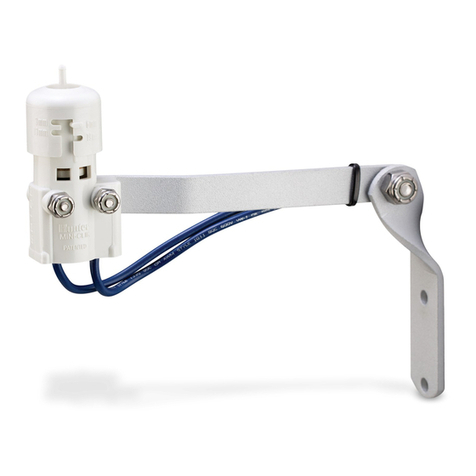
LIT-358 E EM 5/20
Operation Check to Verify Correct Wiring
Turn on one zone of the irrigation system
that is visible while you are in reach of the
Rain-Clik. Manually depress the spindle at
the top of the Rain-Clik until you hear the
switch “click” o. The sprinkler zone should
stop instantaneously. If it does not, check
wiring for correctness. It is not necessary
to “wet” test the Rain-Clik, although it will
test the operation suciently, if desired
(Figure 6).
Need help? Visit hunter.direct/rainclikhelp
Wiring to Your Irrigation System (cont.)
Wiring to Other Controllers
The most common situation is shown below.
1. 24-Volt Solenoid Valves Only (Figure 5)
With the two wires from the Rain-Clik at
the controller, locate the “common ground”
wire of the solenoid valves. If it is connected
to the common terminal on the controller,
disconnect it. Attach one wire of the
Rain-Clik to the “common” terminal (usually
marked “C”) on the controller. Attach the
other wire of the Rain-Clik to the common
wire leading to the valves.
Note: The common wire to the valves does not have to be interrupted at
the controller. The Rain-Clik can be wired anywhere along the common
wire line.
Rain/Freeze-Clik Hunter Controllers
SEN
SEN
C
TEST
P/MV
Figure 2
21C 3 4
Rain/Freeze-Clik Hunter Controllers
SEN
SEN
C
TEST
P/MV
Figure 2
21C 3 4
Rain/Freeze-Clik Hunter Controllers
SEN
SEN
C
TEST
P/MV
Figure 2
21C 3 4
Manufactured under U.S. Patent Pending
All Rain-Clik models are listed by Underwriters Laboratories, Inc. (UL). Samples
of these devices have been evaluated by UL and meet the applicable UL standards
for safety.
© 2020 Hunter Industries Inc. Hunter, the Hunter logo, and all other trademarks are property of
Hunter Industries, registered in the U.S. and other countries. | hunterindustries.com
Rain/Freeze-Clik Other Controller
Solenoid
Valves
Common Wire to All Valves
Figure 5
Figure 6
Manually press the spindle
at the top of the Rain-Clik
Figure 7
Adjustments and Operation
The Rain-Clik can keep the irrigation system
from starting or continuing aer rainfall. The
time that it takes the Rain-Clik to reset for
normal sprinkler operation aer the rain has
stopped is determined by weather conditions
(e.g., wind, sunlight, humidity). These
conditions will determine how fast the
hygroscopic discs dry out, and since the turf is
also experiencing the same conditions, their
respective drying rates will roughly parallel
each other. So when the turf needs more
water, the Rain-Clik is already reset to allow
the sprinkler system to run at the next scheduled cycle.
There is an adjustment capability on the Rain-Clik that will slow down
the reset rate. By closing the “vent” (Figure 7) to completely or partially
cover the ventilation slots, the hygroscopic discs will dry out more slowly.
This adjustment can compensate for an “overly sunny” installation
location, or peculiar soil conditions. Experience will best determine the
ideal vent setting.
Rain-Clik utilizes single-disc technology to turn o your sprinkler
system within the first five minutes of rainfall. For light showers and
amounts of rain less than 3 mm, the single disc will shut o the system
for 30 minutes to 4 hours, depending on weather conditions. Adjusting
the vent cap will not have an eect on the dryout time of the single
disc. For heavier rain showers in excess of 3 mm, the disc stack under
the vent cap will hold the system o for an appropriate amount of time.
The disc stack dryout time is what the vent cap adjustment controls.
Bypassing the Sensor
The Hunter X2™, X-Core™, Pro-C™, ICC2, and I-Core™ controllers are
equipped with a built-in bypass that allows you to override an active
sensor. For controllers not equipped with this feature, should you desire
to bypass the operation of the Rain-Clik for any reason (i.e., turn on your
system even though the Rain-Clik has shut “o” due to rainfall), there is
a simple way to do this: add our Bypass Switch Box. This mounts on or
next to the controller, and by simply moving the switch, the Rain-Clik is
bypassed.
Note: Using the “manual” switch on non-Hunter controllers typically will
not bypass the sensor.
Maintenance
There is no required maintenance for the unit. The sensor does not have to
be removed or covered for “winterizing” purposes.
Troubleshooting
Follow these simple checks rst before assuming the unit is bad and replacing
it. If the system will not come on at all:
A. First, check to see that the Rain-Clik discs are dry and the switch “clicks”
on and o freely by pressing the top of the spindle.
B. Next, look for breaks in the wire leading to the Rain-Clik and check all
wire junctions.
C. Verify temperature is above 3°C (for Rain/Freeze-Clik model).
If the System Will Not Shut O Even Aer Heavy Rainfall
D. Check wiring for correctness (see “Operation Check to Verify Correct
Wiring”).
E. Is the rainfall actually hitting the Rain-Clik? Check for obstructions to
rainfall (e.g., overhangs, trees, or walls).
Vent Ring
Vents

